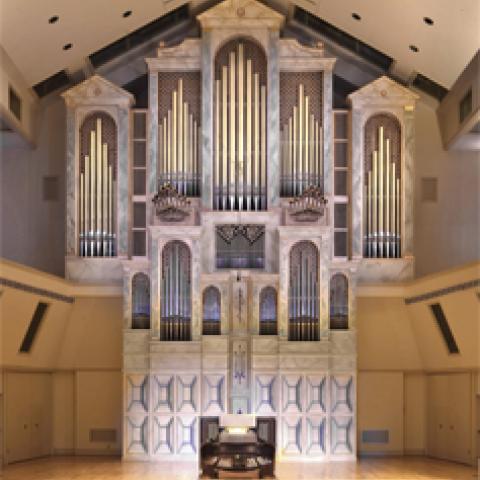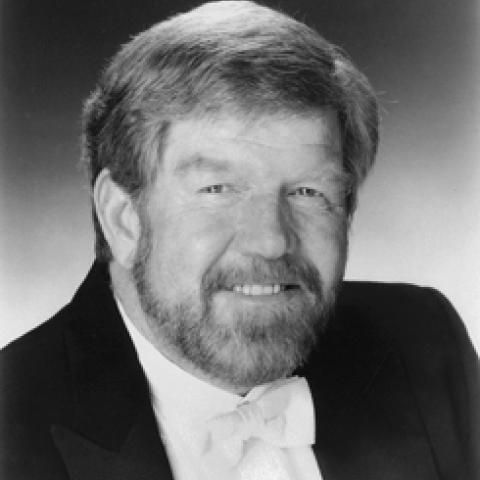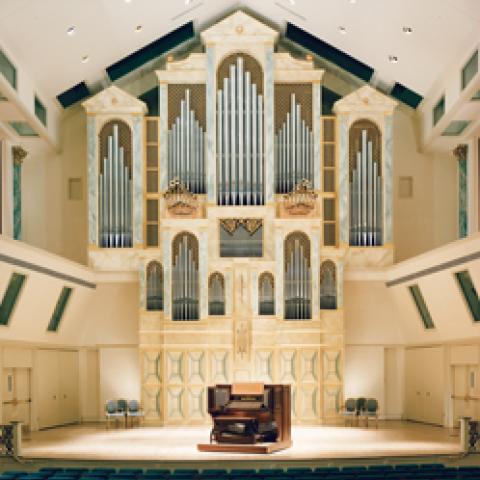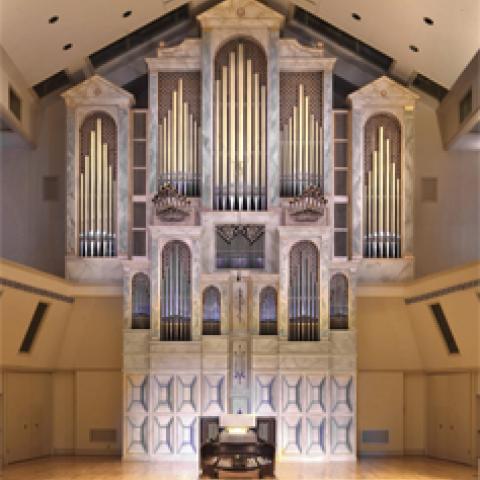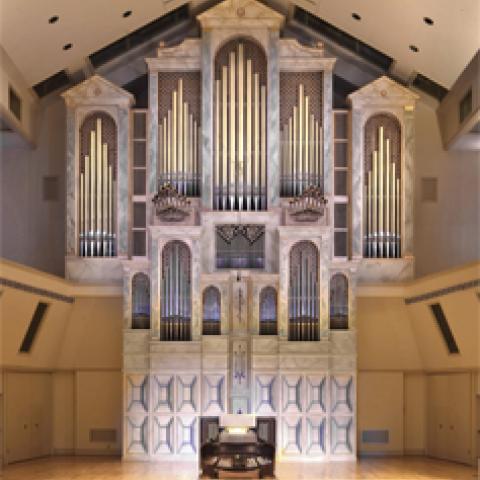Spivey Hall at Clayton State University, Morrow, Georgia, commences a year long celebration of the 25th anniversary of the Albert Schweitzer Memorial Organ with Organ Discovery Day, Saturday, September 10. For this free event, guests can see up close the Fratelli Ruffatti organ of 4,413 pipes. The instrument was featured on the cover of the September 2016 issue of The Diapason.
The event will be hosted by Alan Morrison, Spivey Hall’s organist-in-residence. Joining Morrison will be representatives of the organ’s curator, Widener and Company, as well as Integrated Organ Technologies, Inc.
Among the events will be a performance by Morrison, Q&A with the experts, and the opportunity to view the organ and console on the stage, making this a family-friendly event.
While the day is free, tickets are required by calling the Spivey Hall Box Office at 678/466-4200. For more information, visit www.spivey.org.


